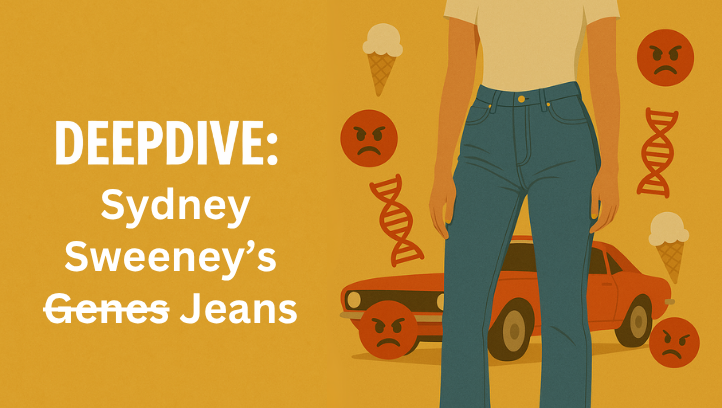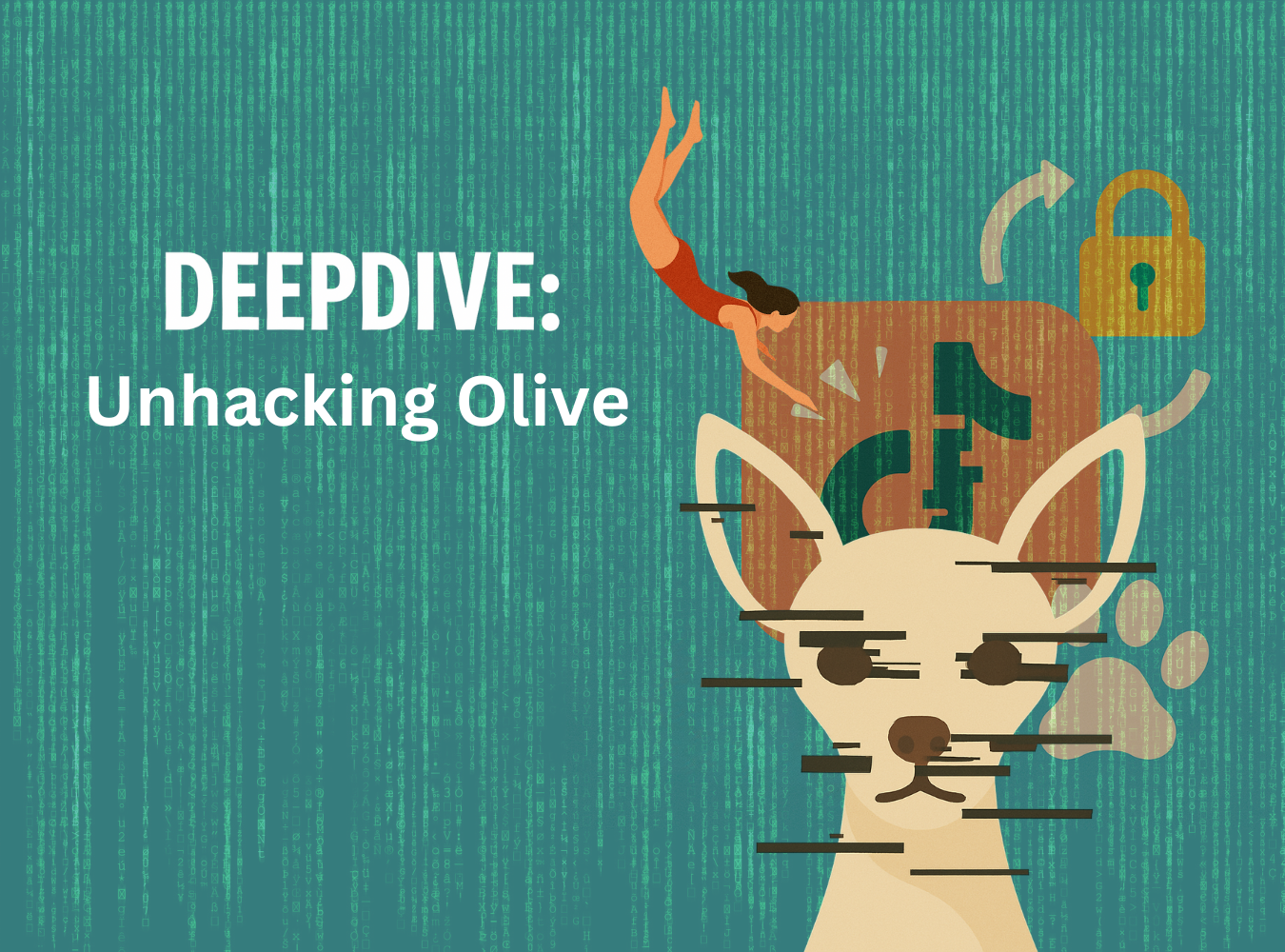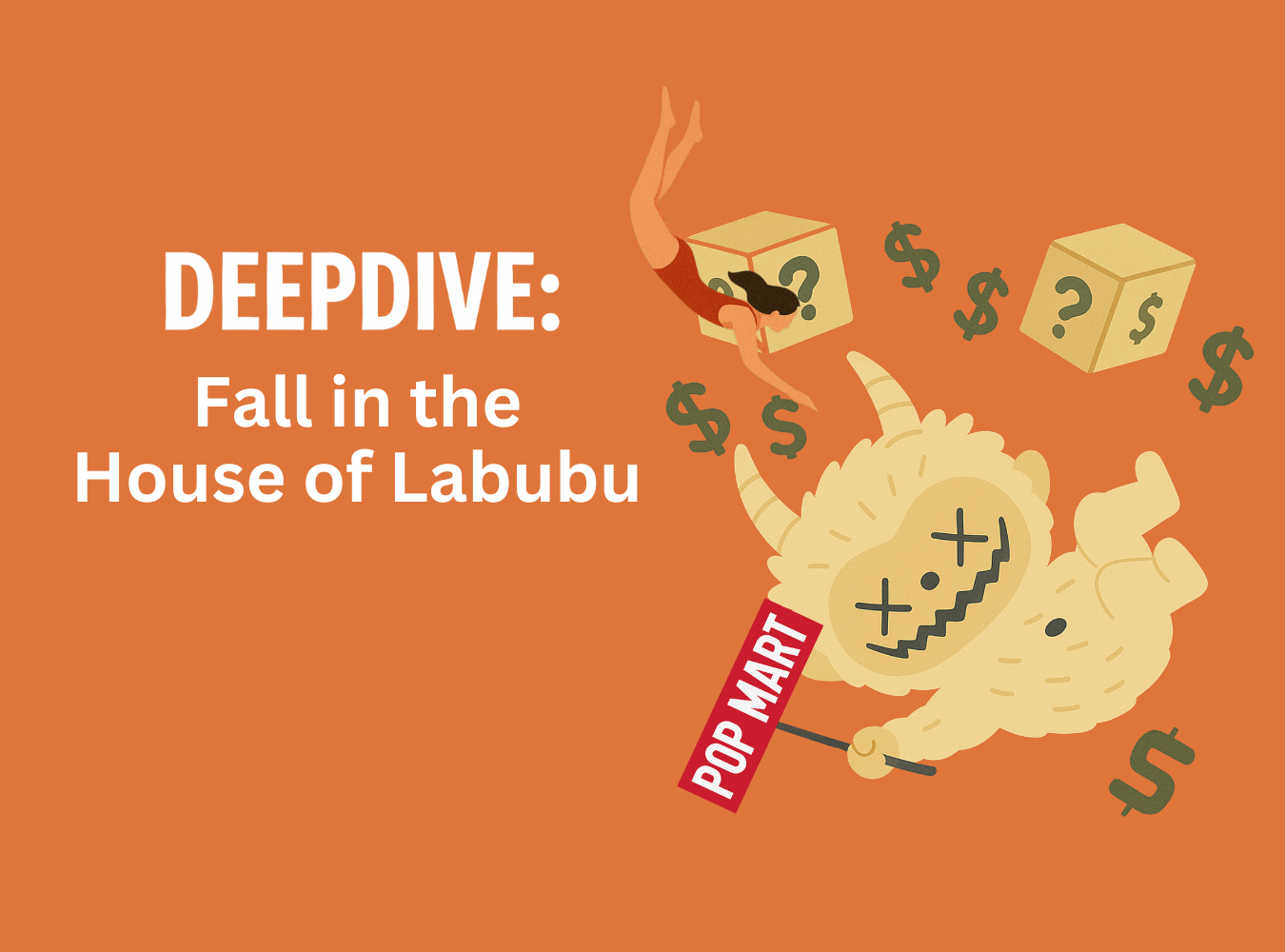Sydney Sweeney’s Good Jeans or Good Genes? The Sydney Sweeney x American Eagle Ad That Blew Up the Internet

What do you get when you mix a blue‑eyed bombshell, a pun about genetics, and a denim ad with the subtlety of a 2000s perfume commercial? Apparently: a social media firestorm, a retail stock surge, and a fresh round of questions about who’s actually approving these campaigns. Sydney Sweeney, star of Euphoria and Anyone But You, recently fronted American Eagle’s fall campaign titled “Sydney Sweeney Has Great Jeans.” At first glance, it’s a familiar marketing formula: celebrity face, clever pun, aesthetic production. But this particular campaign relied heavily on a double entendre, “jeans” vs. “genes”, anchored by Sweeney’s blond hair, blue eyes, and a sultry voiceover meditating on inherited traits. The final line? “My jeans are blue.”
What AE may have intended as cheeky and subversive quickly spiraled into something else entirely. Critics labeled it racially coded, tone-deaf, and disturbingly adjacent to eugenics-era messaging. Supporters dismissed the backlash as an overreaction. Either way, the campaign became a cultural flashpoint for American Eagle, not just for the broader marketing industry reckoning with relevance, representation, and responsibility.
Big Budget, Big Screens, Bigger Misread
American Eagle clearly saw this as more than just another back-to-school campaign; it was positioned as a brand-defining moment. The campaign went live with a 20-story, 3D billboard in Times Square and a spot on the 366-foot-tall Las Vegas Sphere, making AE one of the first fashion brands to advertise on the platform. These weren’t just ads; they were architectural flexes, designed to feel cinematic and omnipresent.
It wasn’t just out-of-home, either. The brand launched a Snapchat-native story arc, a creator-led affiliate network, a broadcast channel on Instagram, and even a presence on BeReal, signaling a fully integrated play across Gen Z’s digital ecosystem. For AE, this was a statement campaign. CMO Craig Brommers even called Sweeney “the biggest get in the history of our brand,” noting that her reach across fashion, fame, and digital culture made her uniquely suited to cut through clutter.
But with a marketing plan built around a singular focus, the stakes become singular too. When there’s only one face, one narrative, and one pun, there’s nowhere to hide when it backfires.
Brand Associations & Oversaturation Risks: Why Sweeney Is Hot, and Why That Might Hurt
🔹 Key Brand Partnerships (2024,25)
Sweeney’s star power is undeniable and widely monetized. In the past year alone, she’s headlined campaigns for:
- American Eagle: Denim ambassador, face of Fall 2025, co-designer of The Sydney Jean (with net proceeds benefiting Crisis Text Line)
- Baskin-Robbins: Led the “Sweet on Sydney” campaign, built on pastel visuals and childhood nostalgia
- Dr. Squatch: Starred in the viral “Sydney’s Bathwater Bliss” stunt tied to Unilever’s $1.5B acquisition
- Additional partnerships: Jimmy Choo, Armani Beauty, Kérastase, Samsung, and Guess
Her appeal spans categories and demographics. But ubiquity comes with consequences.
⚠️ Oversaturation Dangers
Sweeney’s widespread presence risks turning her from a unique cultural signal into background noise. While marketers prize her crossover appeal, research shows that celebrity saturation can backfire, especially across multiple unrelated categories.
- Overexposure dilutes authenticity
- Dominance distorts messaging
- Trust gap widens
- Impact fatigue is real
American Eagle’s previous strategy leaned on multiple faces; 2024’s “Live Your Life” campaign, for example, featured Coco Gauff, Trevor Lawrence, and Nikki Rodriguez. By going all-in on Sweeney, AE aimed to simplify its narrative. But when a campaign depends on one voice, that voice has to land.
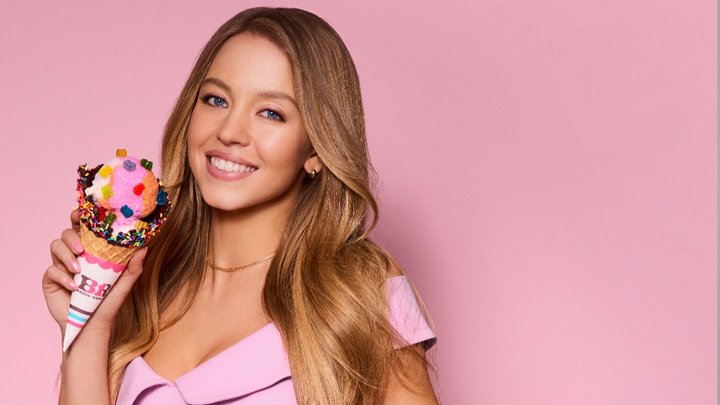
Double-Dip Branding: Sweeney Everywhere, All at Once
Timing compounded the blowback. Just days before the AE ad launched, Baskin-Robbins debuted Sweet on Sydney, a campaign that hit many of the same audience targets with an entirely different tone.
In contrast to AE’s hyper-stylized spot, the Baskin-Robbins campaign was approachable and sincere. Sweeney was seen engaging with staff, trying flavors, and leaning into light-hearted nostalgia. The visuals were soft and colorful. The voiceover? Warm, not provocative. There was no wordplay about genetics, just rainbow sherbet and pastel joy.
The two campaigns created an unintentional case study in brand tone. The wholesome sherbet ad humanized her; the AE spot hyper-aestheticized her. When audiences consumed both within days, the comparison was inevitable, and the AE misfire felt even more jarring by contrast.
@sailawaymedia Lots of pushback on the Internet this weekend on this campaign from American Eagle x Sydney Sweeney #marketing #branding #sydneysweeney #socialmediamarketing #pr
♬ original sound – Alyssa Ege
The Campaign That Got Eviscerated Online
In the AE spot, Sweeney edits a billboard from “Great Genes” to “Great Jeans”. She then narrates a slow, sultry meditation on family traits, eye color, and her blue jeans. Visually, it’s part early-2000s fashion ad, part male-gaze revival, layered with TikTok-era polish. Body pans, tousled styling, and slow-motion cuts all reinforce the campaign’s stylized sexuality.
Online, audiences immediately dissected not just what the ad said, but what it implied. Critics zeroed in on the focus on blondness, blue eyes, and “perfect” traits, drawing comparisons to white supremacist beauty standards. TikTok users called it “Nazi-adjacent.” Reddit threads compared it to 20th-century eugenics propaganda. On X, memes and commentary turned the campaign into a punchline and a warning sign.
Supporters argued it was “just a pun”, nothing more. But “just a pun” doesn’t fly in 2025, where every phrase lives in cultural context and moves at algorithmic speed.
Controversy = Currency
Despite (or because of) the backlash, AE saw a notable short-term gain. The brand’s stock surged over 22%, thanks to speculative trading, meme-driven momentum, and viral reach. In a platform economy where attention is a currency, outrage often becomes part of the media plan, intentionally or not.
This leaves brands in a bind: was the controversy accidental or engineered?
- If it was planned, AE gambled on provocation for profit and won in the short term at a potential long-term cost.
- If it wasn’t, then the brand’s creative process is out of step with cultural awareness and lacks meaningful internal guardrails.
Neither outcome suggests a healthy marketing ecosystem.
The Cause That Got Buried
The campaign included a social impact angle, adding another layer of complexity. Proceeds from The Sydney Jean were earmarked for Crisis Text Line, which supports survivors of domestic abuse and emotional crisis. In theory, this should’ve elevated the campaign’s purpose.
In practice, it got lost. The ad’s highly sexualized and retro-coded visual language clashed with the seriousness of the cause, resulting in cognitive dissonance: a campaign that felt performative rather than purposeful.
When cause marketing isn’t integrated into the creative, it risks being read as opportunistic. Here, the message felt bolted on, not built in.
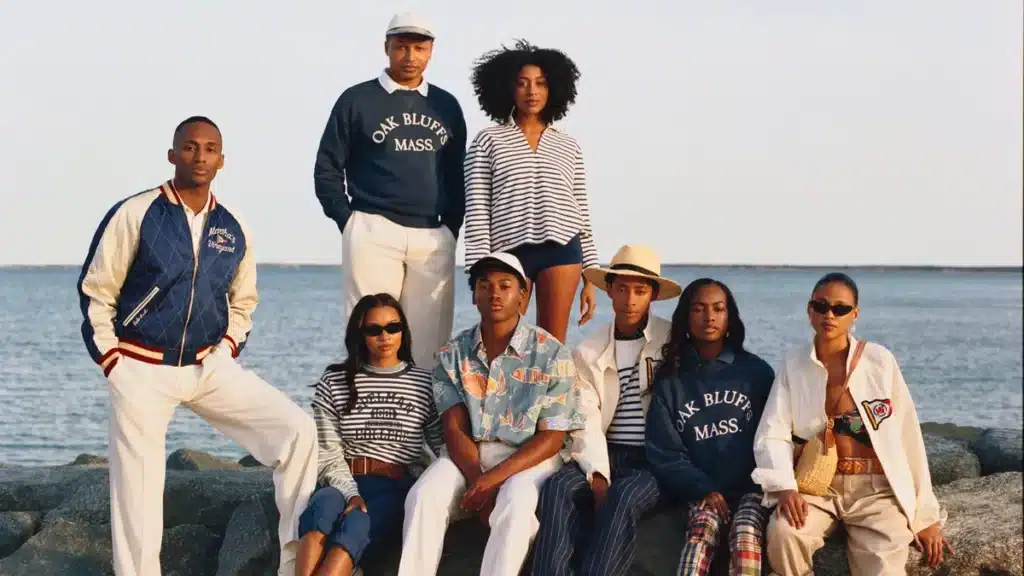
A Tale of Two Campaigns, and a Historical Echo
It’s not just a coincidence that Ralph Lauren’s Oak Bluffs and American Eagle’s Sweeney campaigns launched in the same week. While AE’s push leaned into high-visibility spectacle and provocative wordplay, Ralph Lauren debuted a heritage-rooted collection that honored Black history through collaboration and storytelling.
Released on July 24, 2025, the Oak Bluffs campaign centered on a historically Black coastal community on Martha’s Vineyard. With product design input from alumni of Morehouse and Spelman Colleges, it was accompanied by a documentary film, nonprofit partnerships, and culturally sensitive visuals that felt archival, not appropriative.
Where AE’s campaign stumbled by using ambiguous messaging that unintentionally evoked racialized beauty ideals, Ralph Lauren’s approach demonstrated what it looks like to honor cultural legacy with depth and care.
Yet the AE x Sweeney campaign echoes a deeper history of provocative denim advertising. The comparison that keeps resurfacing? Brooke Shields for Calvin Klein in 1980.
At just 15, Shields delivered the infamous line: “You want to know what comes between me and my Calvins? Nothing.” Meant to be clever and stylized, the line was widely read as a sexual innuendo, especially given Shields’ age. The campaign was banned by networks and slammed by the press. Years later, Shields said she never understood the double meaning at the time; to her, it was just a line in a highly choreographed shoot.
There’s a striking throughline: both ads used layered wordplay to sell denim, featured idealized female beauty, and became cultural lightning rods. However, Calvin Klein was arguably pioneering a new style of shock advertising. In 2025, brands like AE don’t have that excuse. Cultural awareness is table stakes now.
What’s the Real Takeaway?
This campaign offers a multi-layered lesson in what happens when star power, scale, and strategy misalign. The AE x Sweeney rollout at its core shows how easily a high-budget, high-visibility campaign can unravel when cultural nuance, creative coherence, and cause alignment are overlooked.
Celebrity-driven campaigns still work, but they demand more than fame and formatting. They require fluency in the current cultural climate and a sharp sense of what audiences will tolerate or challenge.
Before you green-light your next “breakthrough” idea, ask: Does this align, or just attract?
Key Takeaways for Marketers
- Cultural literacy is now a baseline requirement.
Even playful concepts need to be reviewed through a lens of race, history, and identity. - Cause alignment must extend beyond the fine print.
A donation doesn’t land if the campaign’s tone contradicts the mission. - Celebrity saturation creates recall risk and trust fatigu.e
One face across too many brands lowers perceived authenticity, for both star and sponsor. - Social platforms are not neutral; they shape narrativ.e
TikTok, Reddit, and X don’t amplify campaigns; they interrogate them. - Outrage can convert ,but it can also cost
Virality built on controversy may boost short-term engagement, but if not handled with clarity and care, it damages long-term brand equity.
Final Thought
Creative campaigns today aren’t just launched; they’re dissected in real time, and ideas don’t just go live; they go under the microscope. Every frame, phrase, and face is up for interrogation. And when a single campaign needs to do everything, drive sales, earn headlines, promote a cause, and hold cultural weight, it can break under the pressure.
The real question isn’t whether a campaign will go viral.
It’s whether your team is prepared for what happens when it does.
American Eagle Social Stats July 14th – 23rd
| Metric | Value | Change vs. Prior Period |
|---|---|---|
| Total Followers | 16.7M | +1% |
| Follower Growth | +1,798 | +213% |
| Fan Growth Rate | 0.01% | +213% |
| New Posts | 72 | +50% |
| Engagements | 132K | +262% |
| Response Rate | 0.03% | +197% |
| Public Video Views | 5.71M | +78% |
Sydney Sweeny Social Stats July 14th – 23rd
| Metric | Value | Change vs. Prior Period |
|---|---|---|
| Total Followers | 26.5M | -1% |
| Follower Growth | -29.4K | -147% |
| Fan Growth Rate | -0.11% | -147% |
| New Posts | 3 | +999% |
| Engagements | 1.35M | +380% |
| Response Rate | 1.78% | No change (–) |

